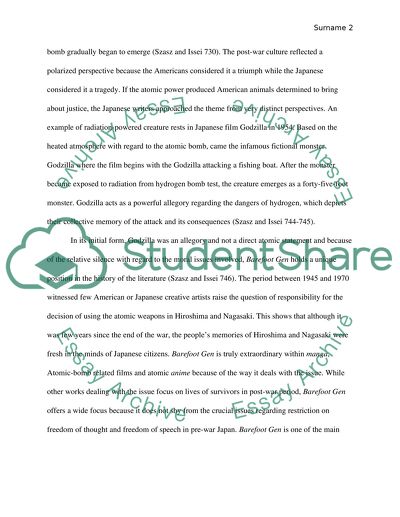Japanese films that depict the Japanese atomic bomb experience Essay. Retrieved from https://studentshare.org/history/1491926-japanese-films-that-depict-the-japanese-atomic
Japanese Films That Depict the Japanese Atomic Bomb Experience Essay. https://studentshare.org/history/1491926-japanese-films-that-depict-the-japanese-atomic.


